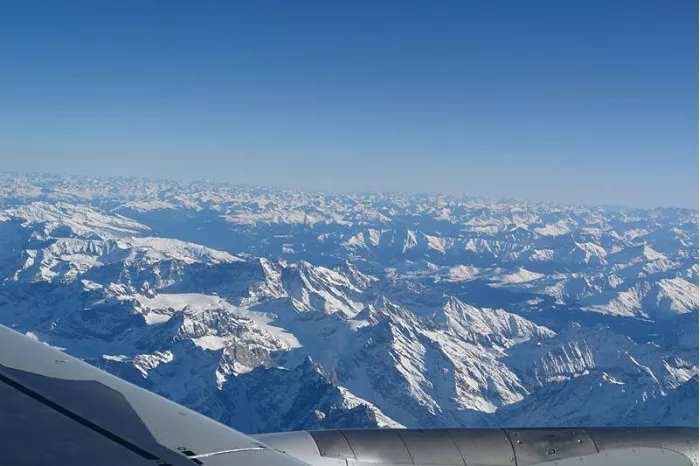The impact of global warming on the Alps is particularly obvious. Like the north pole, this European mountain range is becoming greener. Scientists from the University of Lausanne and the University of Basel( https://www.science.org/doi/10.1126/science.abn6697 ) 》According to an article in the magazine, satellite data show that in nearly 80% of the Alps, the vegetation above the tree line has increased. Snow cover is also decreasing, although so far only slightly**

As the highest and most extensive mountain system completely located in Europe, the Alps are famous for their majestic peaks. Many people believe that it is a primitive region and will be basically unaffected by human civilization. After all, Mont Blanc, the highest mountain in the Alps, has an altitude of 4810 meters, and 128 peaks have an altitude of more than 4000 meters. However, like the Arctic, the Alps are keenly feeling the impact of climate change.
This is not just a problem of melting glaciers. Satellite data show that in nearly 80% of the Alps, the vegetation above the tree line has increased, while the snow is decreasing.
Melting glaciers have become a symbol of climate change in the Alps. Now, the reduction of snow cover can be seen from space, but this is by no means the biggest change. This is the conclusion of a research group led by Professor Sabine Rumpf of the University of Basel and Professor gr é goire Mari é thoz and Professor Antoine guisan of the University of Lausanne.

Researchers used high-resolution satellite data from 1984 to 2021 to investigate changes in snow cover and vegetation. During this period, the plant biomass above the tree line increased in more than 77% of the observation areas. This "greening" phenomenon caused by climate change has been well documented in the Arctic region, and has begun to be found in the mountains.
Sabine Rumpf, the lead author of the study and an associate professor at the University of Basel, said: "facts have proved that the scale of change in the Alps is absolutely huge." The Alps are becoming greener because plants are emerging in new areas and vegetation is generally becoming denser and higher.
Previous studies mainly focused on the impact of global warming on alpine biodiversity and changes in plant species distribution. However, until now, no one has made such a comprehensive analysis of the changes in vegetation productivity in the Alps. The authors show that the increase of plant biomass is mainly due to the change of precipitation and the extension of vegetation period caused by the rise of temperature.
"Alpine plants adapt to harsh conditions, but they are not competitive," Rumpf said She said that as environmental conditions changed, these specialized species lost their advantages and were eliminated by competition. "Therefore, the unique biodiversity of the Alps is facing considerable pressure."
Compared with the vegetation, the snow coverage above the tree line has changed only slightly since 1984. In their analysis, the researchers excluded areas, glaciers and forests below 1700 meters. In the rest of the region, they found that almost 10% of the areas had a significant decline in snow coverage. This may not sound like a lot, but researchers are keen to stress that this is still a worrying trend.
Antoine guisan, one of the two senior authors of the study, explained: "the previous analysis of satellite data has not found any such trend. This may be because the resolution of satellite images is not enough, or because the consideration time is too short."
Gr é goire Mari é thoz added: "over the years, local ground measurements have shown that the snow depth in low altitude areas has decreased. This reduction has led to the basic absence of snow in some areas." Based on satellite data, it is possible to distinguish whether a specific area is covered by snow, but it is not allowed to draw conclusions about the depth of snow.
As global warming continues, the Alps will increasingly turn from white to green, forming a vicious circle: "greener mountains reflect less sunlight, leading to further warming - in turn, the reflective snow cover will shrink further," Rumpf said. Climate warming has also led to further melting of glaciers and thawing of permafrost, which may lead to more landslides, rockfalls and mudslides. In addition, Rumpf also emphasized the important role of alpine snow and ice in drinking water supply, especially in entertainment and tourism.